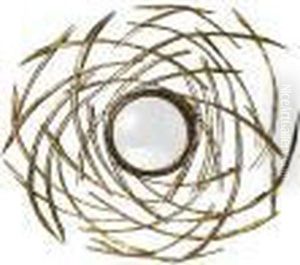Georges Van Der Straeten Paintings
Georges Van Der Straeten was a Belgian sculptor born on October 20, 1856, in Ghent, Belgium. Though not as widely recognized today as some of his contemporaries, Van Der Straeten made significant contributions to the decorative arts, especially within the Art Nouveau movement towards the end of the 19th century and the early 20th century.
Before embarking on his artistic career, Van Der Straeten was trained as a lawyer, a profession he practiced for a brief period. However, his passion for art led him to pursue sculpture. He moved to Paris, which was the epicenter of the art world at the time, to develop his craft. There, he was influenced by the city's artistic environment and the emerging Art Nouveau style, which emphasized natural forms, flowing lines, and ornamentation.
Van Der Straeten became known for his busts and statuettes depicting elegant women of society, actresses, and allegorical figures. His works were often characterized by a sense of movement and a flair for capturing the fashion and spirit of La Belle Époque. He skillfully rendered the textures of fabrics, hair, and accessories, bringing life to his bronze and sometimes marble sculptures. His pieces were typically cast using the lost-wax process, and they were often adorned with gilt or patinated finishes, which added a luxurious quality to the works.
The artist exhibited regularly at the Salon in Paris and was awarded the Order of Leopold by the Belgian government in recognition of his artistic achievements. His sculptures were in high demand and were collected by a fashionable clientele, which included members of the aristocracy and the bourgeoisie.
Georges Van Der Straeten's career continued to flourish into the early 20th century. However, with the shift in artistic tastes following World War I and the advent of modernism, his style of work fell out of favor. Van Der Straeten died on November 20, 1928, in Paris. Although he may not be as well-remembered as some of his peers, his work still represents an important link in the chain of decorative sculpture and provides a window into the aesthetics and society of his time. Collectors and museums continue to appreciate his sculptures for their elegance, charm, and technical proficiency.

